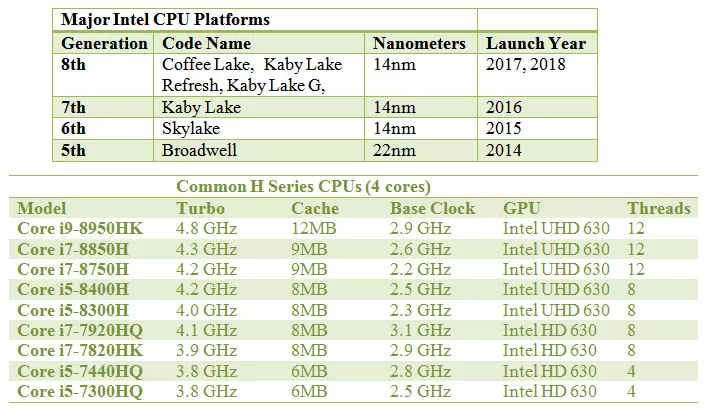Generation of Computers 1st, 2nd 3rd, 4th, and 5th
1st GENERATION ( WESTMERE ARCHITECTURE)
Westmere is the first generation of core i3. Formerly it is known as Nehalem-C. Intel HD, UHD & iris Graphics come under Westmere. But not for Nehalem. There are three caches present in this L1, L2, L3.LI cache 64 kb\core, L2 cache 256 kb\core, L3 cache 4 to 30 MB. Releasing date of Westmere is January 2010. The transistors used in this is 382M to 2600M. Different extensions are used in this is SSE, SSE2, SSE3. There is some sockets use in this i.e LGA 1156, LGA 1366, LGA 1567.
The predecessor of this generation is Nehalem and the next series of this is Sandy Bridge. The GPU of this generation is 533 MHz to 900 MHz.Before Westmere, there is a version release known as Nehalem. But with the passage of time, the Westmere feature’s improved from Nehalem. One of the best features of Westmere is that it is used for huge pages of 1 Gb in size and also improved virtualization latency. The model name of Westmere is
Core in, Xeon. One of the best features of this is the New virtualization capability “VMX
Unrestricted mode support,” which allows 16-bit guests to run. There are different CPU’S
of Westmere in which include TDP, Clarkdale, Arrandale. The successor to Nehalem & Westmere is lead to Sandy Bridge. The instructions use in Westmere is MMX, AES-NI, CLMUL. The architecture uses to design this is Nehalem x86. Integrated graphics add into the processor package.
Examples Of First Generation Computer
2nd GENERATION (SANDY BRIDGE)
Sandy Bridge is the Second generation of the Intel Core Processor(Core i3). Sandy Bridge is the series come after the success of Nehalem Microarchitecture. The releasing date of Sandy Bridge is January 2011. As there is a different clock of different generations of Core i3.The clock rate of this generation is 1.60 to 3.60 GHz.Almost, there are three caches in this.L1, L2, L3.
L1 has 64 KB per core, L2 has 256 &L3 has 1 to 8MB. Different Sockets are used in this i.e LGA 1155, LGA 2011, BGA 1284. Sandy Bridge developed in a 32-nanometer process. Different extensions are used in this for example SSE,SSE2,SSE3,SSSE3,SSE4.Sandy Bridge is too much better
than 1 generation processor. Sandy has Different Features include Intel turbo,64-byte cache, 256-bit\cycle, 8 physical core`2.
As the performance of Sandy Bridge is better than the earlier generation. According to IXBT lab and different sites 11.3% as compared to Nehalem Generation. Sandy Bridge processors contain a technology known as DRM. In this, some video streaming
web sites rely on restricting the use of their content. These websites mostly offer 1080p and 720p streaming.
With the release of Sandy Bridge, Intel has introduced the kit which we name as Intel DPDK.
(INTEL DATA PLANE DEVELOPMENT KIT).The product code is 80623. The model name in this is Celeron series, Pentium Series, Extreme series. In this, the transistor is 504M to 2.27B. Different
GPU is present in this generation include different HD GRAPHICS 650 MHz to 1100 MHz, HD GRAPHICS 2000 (650 MHz to 1250 MHz), HD Graphics 3000(650 MHz to 1350 MHz), HD graphics P3000(850 MHz to 1350 MHz).
One of the best features of this is that its intel turbo boost 2.0. and it has a 64-byte cache line size. The Sandy Bridge composed of 1-2 billion transistors and there is a double gate. The maximum range of core is eight. Usually, the Sandy Bridge based on one or more core, as these cores increase the performance of computing.
Examples Of Second Generation Computer
3rd Generation (IVY BRIDGE)
Ivy Bridge is the codename used for 3 generations of the Intel core processor. Ivy Bridge shrinks to 22 nanometers as the Sandy Bridge based on 32 nanometers. It is released in 2013. The product code
of Ivy Bridge is 80637 & the Cpu id code is 0306A9h. Three caches are used in this LI: 64 kb\core, L2:256 kb\core, L3:2 to 8 MB\core.Different extensions are used in this i.e SSSE3,SSE4,SSE4.2,SSE4.1AVX etc.Whereas the sockets which are use are LGA 1356, BGA-1224.
In 2011, intel release the integrated USB for the complementation of Ivy Bridge.
The Ivy Bridge is the part of Sandy Bridge and there is no change made in this. But there are notable improvements perform in Ivy Bridge. Different heat issues and thermal issues occur when overclocking is occur.
A report release which claims that the temperature of Ivy Bridge is 10 degrees higher than Sandy Bridge. Once a Japanese website performs an experiment which performs experiments and declares that it is confirmed that the temperature of IVY is greater than SANDY when overclocking is occur. This occurs due to the use of poor quality of (TIM).
TIM stands for Thermal Interface Material. Researchers report that Intel uses the bad and low-quality TIM which occur this problem. Further experiment and analysis prove that it causes
cautions if it uses by home users in order to attempt the remedy matter. The predecessors of IVY is Sandy Bridge-E & Successor is Haswell-E.Their 3 different types of IVY bridge.IVY Bridge-E, IVY Bridge-EN, IVY Bridge-EP, IVY Bridge-EX.
